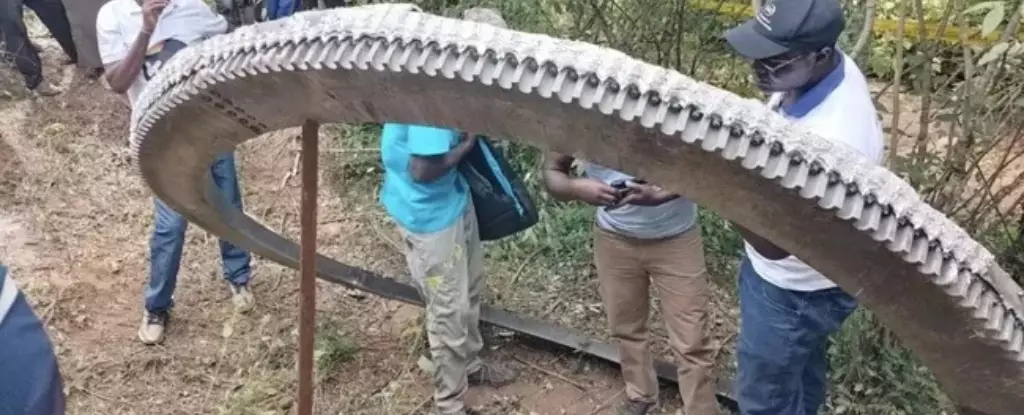On an otherwise ordinary Wednesday afternoon, residents of Mukuku Village in Kenya were taken aback by a cosmic event they won’t soon forget. A massive metallic ring, weighing approximately 1,100 pounds and spanning eight feet in diameter, made an incredible touchdown in their village around 3 p.m. local time. According to the Kenya Space Agency, luckily, there were no injuries reported from this inexplicable occurrence. Although the object was identified as space debris, questions loomed large regarding its origin, leading to an urgent investigation into the matter.
The concept of space debris isn’t new; it has been a growing concern since the dawn of space exploration in the late 1950s. Objects launched into orbit often have a finite lifespan, and as they deteriorate, fragments can fall back to Earth. While the intention behind the design of these items often includes mechanisms to burn up upon atmospheric re-entry or to land in uninhabited areas, incidents like the one in Mukuku highlight how this plan can falter. Major Alois Were of the Kenya Space Agency informed local media that the metallic object was likely part of a rocket separation stage, underscoring the technical complexities involved in space missions.
Following the startling impact, the Kenya Space Agency wasted no time in assessing the situation, collecting fragments from the impact site. Their immediate focus was determining the origin of this space debris, an effort that involves collaboration with international bodies due to the transnational nature of spaceflight. The agency’s commitment to utilizing existing legal frameworks to address accountability is crucial—space law has evolved to ensure that entities launching objects into orbit retain responsibility, even when those objects fall from grace. However, identifying the responsible party can be as complicated as the physics governing space itself.
The problem of space debris is exacerbated by the increasing frequency of rocket launches. Statistical data shows a substantial surge in launch rates, climbing from an average of 82 missions per year between 2008 and 2017 to a staggering 250 in 2024 alone. Each new launch presents a dual challenge: the potential for space debris to rain down on populated areas and the escalating problem of space clutter, which encompasses everything from nonfunctional satellites to small fragments of metal. Physicist Thomas Berger noted that the proliferation of this debris is so significant that satellite operators receive around 1,000 warnings about potential collisions daily.
The modern era of space exploration is perilously close to pushing the boundaries of operability in orbit. Berger warned of the “Kessler syndrome,” an event where an initial collision triggers an uncontainable chain reaction of further impacts, ultimately forming a hazardous environment in space and making it potentially uninhabitable for future missions. This delicate interconnectedness of celestial mechanics and human endeavors emphasizes the importance of not only managing existing debris but also undertaking concerted efforts toward sustainable space exploration.
The incident in Mukuku Village serves as a vital reminder of the unseen risks associated with our expanding presence in outer space. While no one was harmed this time, the reality is that as we continue to push the envelope of space innovation, the intersection between our planet and the heavens will only become busier. Thus, it becomes crucial for space-faring nations and organizations to collaborate effectively, prioritizing not just exploration but also safety and sustainability in the realms above. The unpredictability of such incidents calls for immediate global attention and action to safeguard both terrestrial and extraterrestrial environments, ensuring that we leave a clean legacy for future generations.

